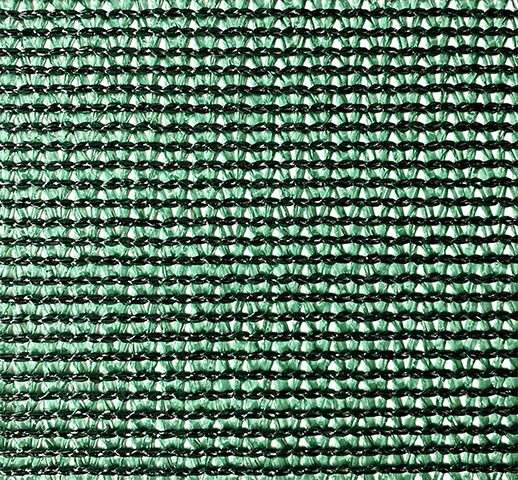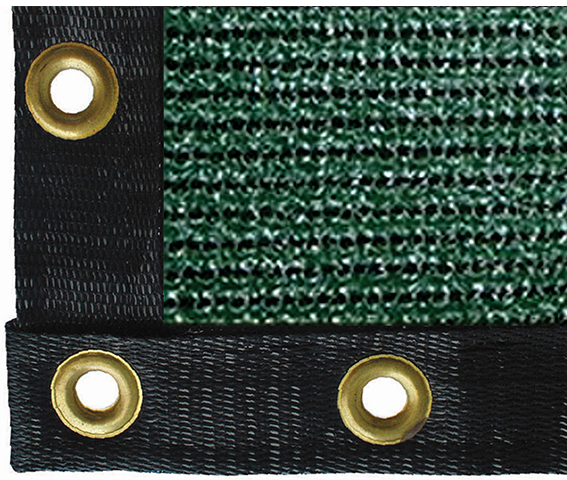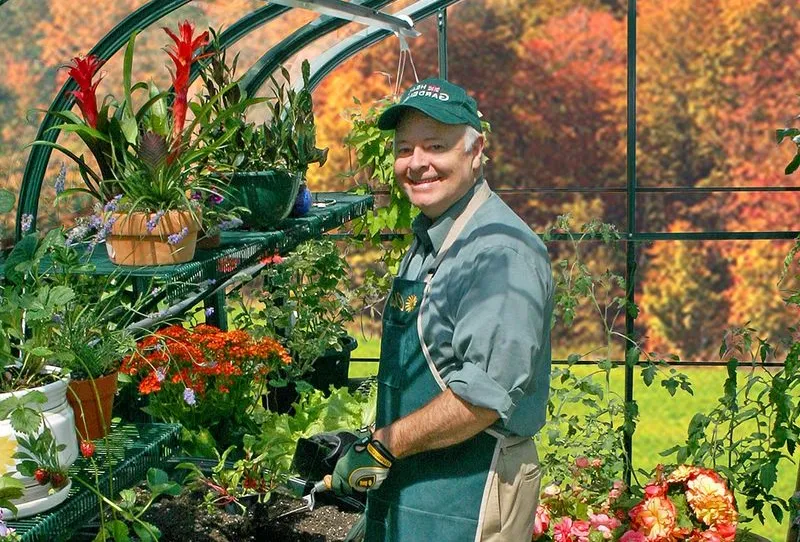Choosing the Perfect Shade Cloth for Your Greenhouse
Finding the right balance of light is crucial when caring for your greenhouse plants. Too much sunlight can scorch them, while too little can hinder their growth. Shade cloths help create the ideal environment where your plants can flourish.
Selecting the best shade cloth for your greenhouse involves balancing light, temperature, and protection. Whether nurturing delicate seedlings or cultivating heat-loving vegetables, the right shade cloth can foster a thriving, healthy environment for your plants.
Why Use Shade Cloth in Greenhouses?
Shade cloth offers numerous benefits to greenhouse gardeners, from boosting plant health to optimizing growing conditions. It keeps temperatures down during the scorching summer months, helping prevent plants from overheating and reducing the stress they experience in high heat.
Shade cloth for a greenhouse provides crucial UV protection by filtering out a portion of sunlight. It shields delicate leaves from the harsh rays that can cause sunburn and stunt growth. This precise light management also boosts photosynthesis, promoting healthier, more vigorous plants.
Shade cloth also helps conserve water by reducing evaporation, so you’ll spend less time watering and enjoy lower utility costs. The result? Stronger, more resilient plants that are better equipped to resist pests and diseases, leading to improved yields and a more productive greenhouse.
Factors to Consider When Choosing Shade Cloth
When picking out a shade cloth for your greenhouse, keep these key factors in mind to make sure it’s the perfect fit for your plants and their growing environment:
Light Intensity and Plant Requirements
Different plants require varying light conditions, so selecting the appropriate sun shade for your greenhouse is essential to ensure they receive optimal light.
Low-light plants. Low-light plants such as ferns, orchids, and peace lilies thrive in environments with 65-75% shade. These plants are accustomed to the soft, filtered light found on a forest floor. Choose a dense shade cloth that effectively blocks sunlight to keep these shade-loving species healthy.
Medium-light plants. Medium-light plants, such as tomatoes, peppers, herbs, and leafy greens, are common staples in most greenhouses. These plants typically thrive with around 50% shade, providing the ideal balance—protecting them from the intense midday sun while allowing ample light for healthy growth and photosynthesis.
High-light plants. Plants that thrive in high-light conditions, such as succulents, citrus trees, and many flowering varieties, require minimal shading. These sun-loving plants often do well with little to no shade. If you’re growing high-light plants, using a low-density greenhouse sun shade can be beneficial, or you might only need to use it during the hottest parts of the day or year to protect them from extreme heat.
Climate and Weather Conditions
Your local climate and weather patterns are crucial in selecting a suitable shade cloth for your greenhouse. Depending on your location, you’ll require varying shade levels and protection to suit your specific environmental conditions.
Tropical climates. In regions with intense sunlight and high temperatures, such as the southwestern United States, a denser shade cloth (50-70%) is an excellent choice. It helps maintain cooler greenhouse temperatures and protects your plants from heat stress. Areas with similar climates, like parts of California or Florida, also benefit from high-density shade cloths to manage the intense sun and high heat.
-
Cool climates. In regions with milder summers or less intense sunlight, such as the Pacific Northwest or higher-altitude areas in the United States, a lighter shade cloth (30-40%) is usually sufficient. It provides the necessary protection without significantly reducing light levels. Since these areas don’t experience the same sun intensity as hotter regions, a less dense shade for greenhouses typically ensures your plants remain healthy.
Seasonal adjustments are essential when using shade cloth in your greenhouse. As light levels and temperatures fluctuate throughout the year, your shading strategy may need to be adjusted. For example, when young plants are just beginning to grow in the spring, a light 30% shade cloth can provide gentle protection without blocking too much sunlight. The key is to adapt to changing conditions to keep your plants thriving year-round.

Switching to a 60% shade cloth as summer hits its peak can help your plants handle the intense heat and bright light. As fall approaches and the days shorten, you can reduce it to a 40% shade cloth to maximize the available light. When winter arrives and the days become even shorter, consider removing the shade cloth entirely to allow as much light as possible during the darker months.
Shade Cloth Percentage and Density
Understanding shade percentages is essential when choosing your greenhouse's shade cloth. Here are some common options:
30% shade cloth. A 30% shade cloth allows 70% of light to pass through, providing minimal shading for heat-tolerant plants or light-loving crops. This level of shading is best for extending the growing season in cooler climates, protecting sun-loving plants during peak summer heat, and providing light shade for seedlings and young plants.
50% shade cloth. A 50% shade cloth is an excellent choice for many plants and climates. It offers a good balance between letting in light and cutting down on heat, making it ideal for general-purpose greenhouse shading. This density level is perfect for growing crops with different light needs and helps keep the greenhouse comfortable while you’re working.
70% shade cloth. A 70% shade cloth offers maximum shading by blocking 70% of the light, which helps create a much cooler environment in your greenhouse. This level of shade is perfect for protecting delicate, shade-loving plants and is helpful in hot, sunny regions where keeping temperatures down is a priority. It’s also great for propagation and rooting cuttings, as the lower light levels help create the right conditions for young plants to establish and grow.
Initial Investment vs. Long-term Benefits
While high-quality shade cloth greenhouse options may come with a higher upfront cost, it often leads to significant long-term savings. Effective shading can reduce the need for artificial cooling, cutting energy costs by up to 35%. Additionally, the water conservation benefits can lower water usage, resulting in substantial savings on your water bill.
Investing in durable, UV-stabilized shade cloth can also prevent plant losses due to heat stress or sunburn—especially important for high-value crops or rare plants. Though the initial cost might be higher, the long lifespan of quality shade cloth (typically 5-10 years) makes it a cost-effective choice in the long run.
Types of Shade Cloth and Their Applications
Several types of shade cloth are available, each tailored with specific features to meet various needs and applications.
Woven or Knitted Shade Cloth
Woven shade cloth is highly durable and renowned for its tear resistance. Its stiffer structure makes it ideal for permanent installations or areas exposed to harsh weather conditions. Typically crafted from high-density polyethylene (HDPE) or polypropylene, woven shade cloth is designed for longevity, making it an excellent choice for long-term use.

Knitted shade cloth offers flexibility and ease of use. Its design promotes better airflow, making it ideal for temporary or seasonal applications. Typically made from polyethylene or polyester, this versatile shade cloth can be easily adjusted or removed whenever needed.
Shade Paint and Coatings
Liquid shade coatings are a flexible option for greenhouse shading. These coatings can be applied directly to the greenhouse’s exterior, providing adjustable protection from sunlight. As the season changes, you can easily wash them off or reapply as needed. They’re perfect for gardeners looking for a customizable shading solution.

Vari-Shade Concentrate Leaf Greenhouse Shading Paint offers versatile protection by screening out excess summer sun while turning transparent during rainy weather to allow more light. When dry, it turns white to offer shade again. This paint can be thinned to achieve your desired shading density and applied with a roller or brush.
Colored Shade Cloth Options
Another crucial factor to consider when selecting shade cloth is color. Different colors can influence plant growth and the overall conditions within a greenhouse in various ways.
Black shade. Black shade cloth absorbs heat, making it a good choice for cooler climates or winter use. It provides excellent shading but can increase greenhouse temperatures, so use it cautiously in warm regions.
White shade. White shade cloth reflects heat, making it ideal for tropical climates. It offers good light diffusion and can lower temperatures by 10-15% compared to black shade cloth. This makes white an excellent all-around choice for many greenhouse applications.
Green shade. Green shade cloth offers a natural look that provides a balanced light spectrum and promotes photosynthesis. It’s popular in ornamental plant production, where its green color creates a soothing, foliage-like environment. This makes the greenhouse space feel more natural while giving plants the shade they need to thrive.

Optimize Your Greenhouse Environment With Charley’s Greenhouse & Garden
Selecting the best shade cloth for your greenhouse helps to create an optimal growing environment for your plants. Charley’s Greenhouse & Garden offers a wide range of high-quality shade cloth options to suit your specific needs.
Our knowledgeable staff can help you choose the perfect shade cloth for your greenhouse, ensuring your plants thrive in ideal conditions. Explore our selection of shade cloth for greenhouse applications and elevate your gardening experience today!


